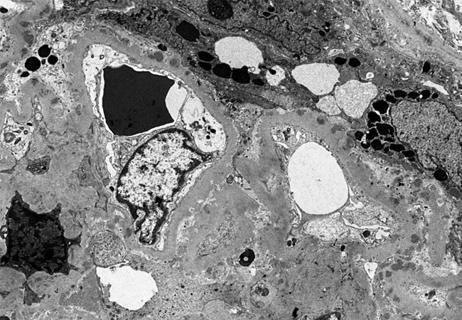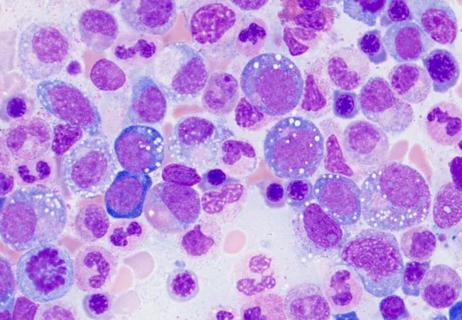Advertisement
Dietary approaches to health and wellness

As discussed in Part 1 of this series on chronic inflammation and the epidemic of chronic disease, over 50% of deaths worldwide are attributable to inflammation-related diseases, such as diabetes, cardiovascular diseases, metabolic syndrome, cancer, neurodegenerative disorders and autoimmunity. Underlying this epidemic is an evolutionary mismatch in which current behavioral habits (i.e., how we eat, engage in physical activity, sleep and parse the stresses of daily life) are dramatically different than the behaviors of those living in preindustrial revolutionary times.
Advertisement
Cleveland Clinic is a non-profit academic medical center. Advertising on our site helps support our mission. We do not endorse non-Cleveland Clinic products or services. Policy
Among the most dramatic changes is the global spread of the Western-type diet (WD), which includes highly processed, convenience foods and sweetened beverages – all high in calories, sugars, trans fats and saturated fats, salt and other food additives.
Stripped carbohydrates: Patterns of food supply, distribution, preparation and consumption have undergone a marked shift in the past century. Products like corn syrup, maltodextrin and vegetable shortening did not previously exist. Carbohydrates were consumed as they grew, with an intact fiber matrix. By the late 18th century, however, major channels developed for the manufacture and distribution of stripped carbohydrates like sugar and white flour, and consumption rose until stripped carbohydrates constituted a significant majority of the diet. Standard breakfast recommendations (e.g., toast, bagels, muffins, waffles, pancakes, biscuits, orange juice and breakfast cereals) now consist almost entirely of stripped carbohydrates.
Chemically modified foods: Early in the 20th century, partially hydrogenated fat, synthesized for the soap- and candle-making industries, made its way into commercial baking as a lucrative third market. The considerable role of partially hydrogenated fats in chronic disease remained unknown for many decades, and their removal from processed foods was mandated only recently. Additionally, convenience foods represent a significant proportion of the WD. These include ultra-processed fats (e.g., soybean, corn and cottonseed oils), which are chemically modified to increase shelf life. In contrast, a Mediterranean diet reduces inflammation and chronic Western disease by emphasizing fruits, vegetables and nourishing fat sources (i.e., nuts, seeds, avocados, olives, fish and eggs).
Unbalanced fat sources: Prior to the 20th century, virtually all human diets contained a balanced ratio of omega-6 and omega-3 essential fatty acids. Inflammation and metabolic syndrome are consequences of a diet high in omega-6s relative to omega-3s. A broader understanding of the role of fats in the diet continues to evolve.
Advertisement
A growing body of data derived from preclinical investigations as well as observational and interventional studies has conclusively provided evidence that the WD is a major driver of chronic, low-grade, metabolic inflammation. The mechanisms contributing to these pro-inflammatory effects are multiple. First, consumption of the WD has been demonstrated to lead to both quantitative and qualitative changes in our microbiome, which in turn helps shape our integrated immune response. Such dietary patterns also lead to disruption of the gut-barrier integrity, allowing harmful translocation of microbial products, which can induce inflammation.
Finally, perhaps one of the most remarkable developments in our understanding of the diet-inflammation axis is its demonstrated capacity to serve as a danger signal to the innate limb of immunity. Innate immunity — our early line of defense against infectious danger signals — was traditionally understood as lacking a memory component. Over the past decade, mounting evidence has demonstrated that innate cells (e.g., myeloid cells) can “memorize” inflammatory encounters with pathogens, creating long-lasting changes in the way the cells respond to subsequent challenges. Similarly, a series of studies have demonstrated that innate immunity can also respond with “trained memory” to sterile challenges, such as uric acid and cholesterol crystals. Bringing this back to our dietary patterns, based on pre-clinical experimental modeling, the innate immune system appears to mistakenly recognize the WD as a threat and responds vigorously with an inflammatory response as result of metabolic and epigenetic reprogramming.
Fortunately, our choice of food is a modifiable driver of chronic inflammation. A diet that focuses on whole food sources and reduces manufactured food products can influence our mycobiome, metabolome and epigenome, all of which shape and control inflammation and immune health.
Recommendations for replacing ultra-processed items with real food include:
Dr. Calabrese (@LCalabreseDO) is Director of the R.J. Fasenmyer Center for Clinical Immunology at Cleveland Clinic.
Dr. Sukol (@RoxanneSukolMD) is Vice Chair of Executive Health at Cleveland Clinic and author of yourhealthisonyourplate.com.
Advertisement
Advertisement

New clinic meets Hispanic patients where they are

Several factors masked the cause of the patient’s chronic condition

Patient with previous neurological, bone and hematologic involvement presents with hematemesis

Coordinating care across multiple disciplines

A broad differential diagnosis

From methotrexate for RA, to the treatment of HIV and multicenter randomized trials, Cleveland Clinic has long been at the forefront in the field of rheumatology

Study examines the acceptance of PROMs in a large series of rheumatology patients

The identification of a novel disorder: the VEXAS syndrome